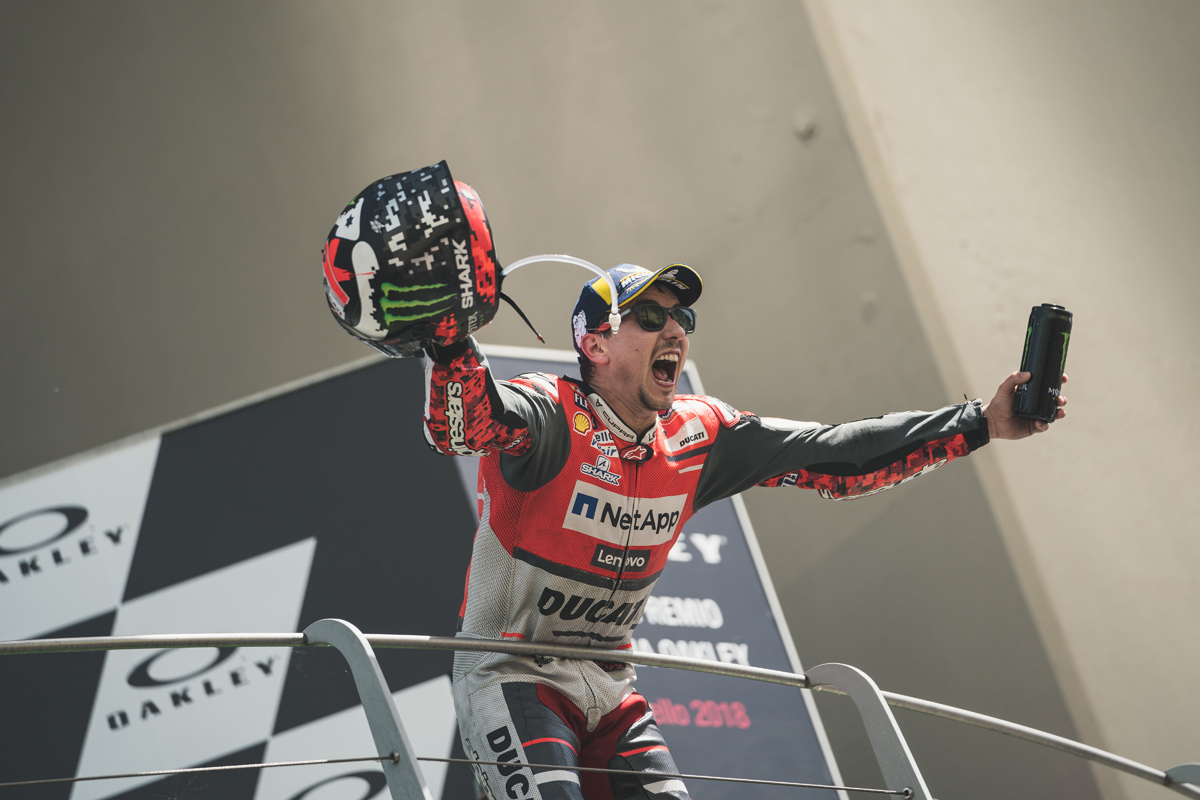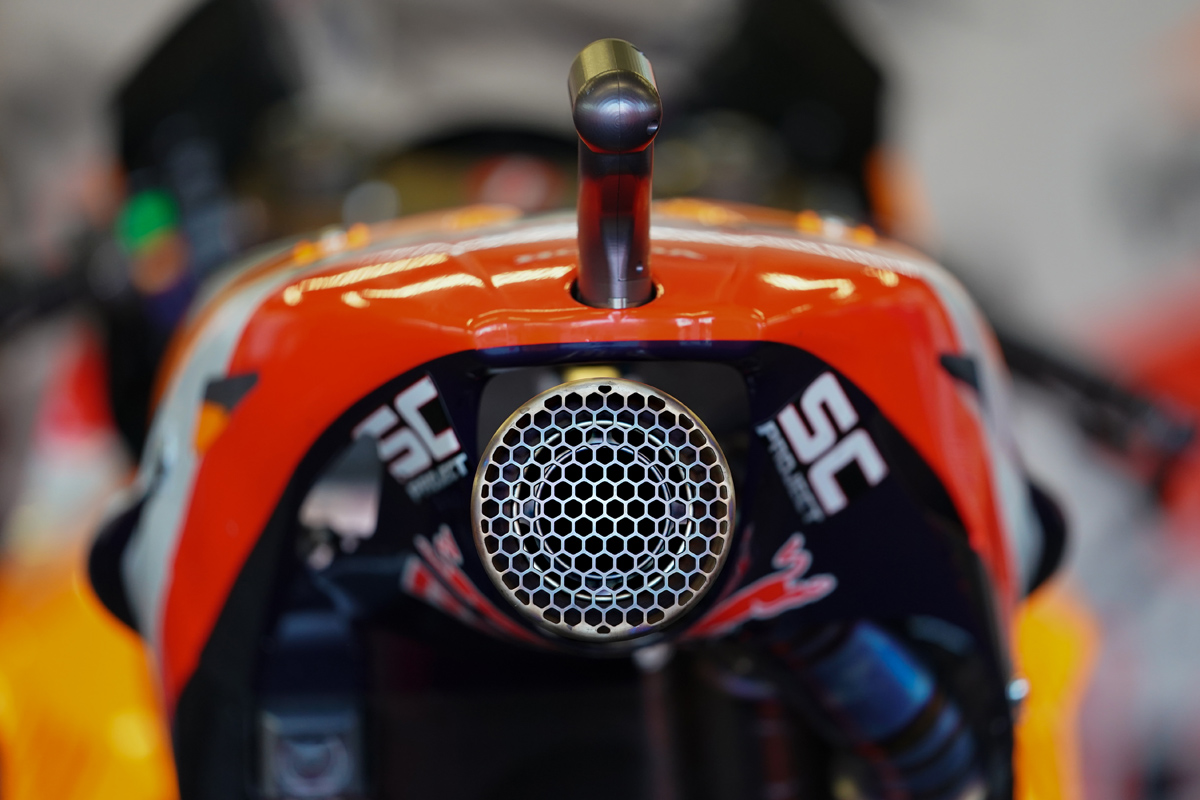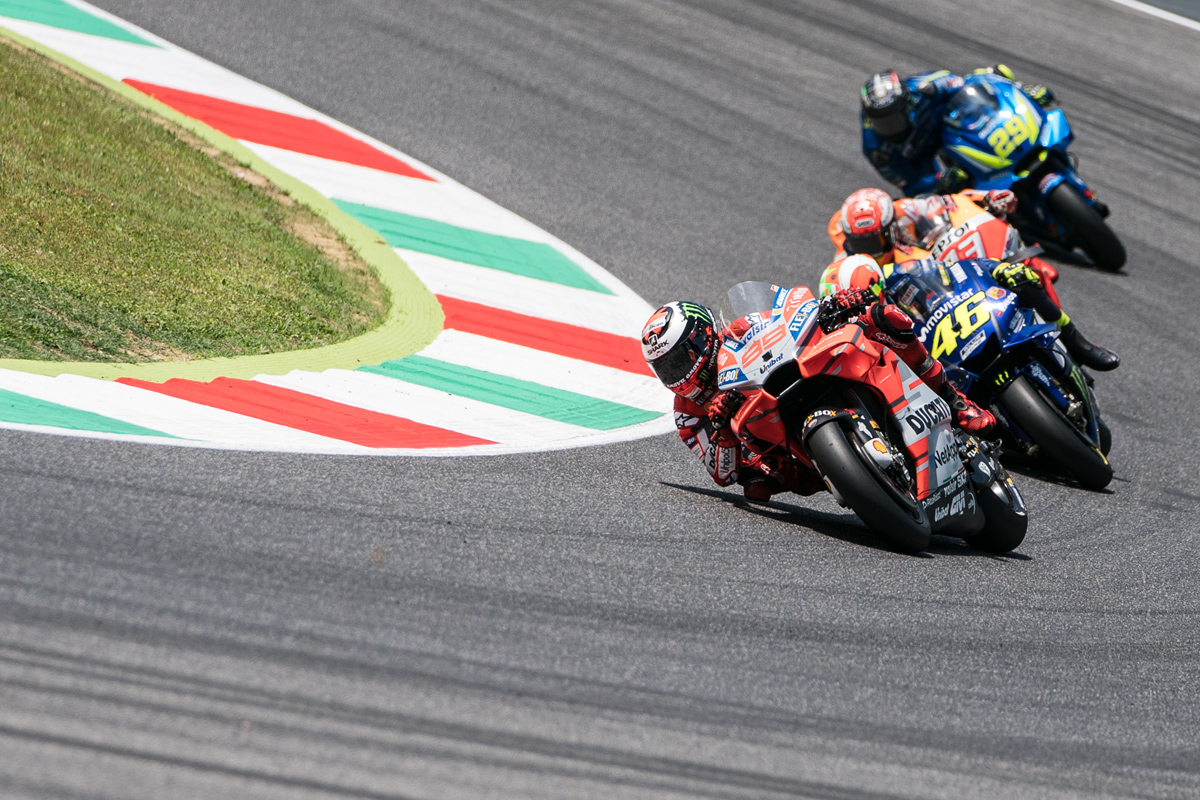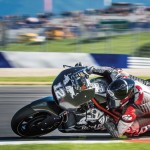On the face of it, Ducati’s afternoon could not get any better. On Sunday Jorge Lorenzo ended a 2018 five-race run of misery to romp to a dominant victory at Mugello, his first win for the Bologna factory in 15 months of trying. With Andrea Dovizioso second, there sat the monumental feat of a first ever one-two in Italy. In fact riders clad in Bologna-red had only scaled the top two steps of a MotoGP podium four times before. In front of 90,000 slightly conflicted fans, this was a moment to savour, a time to rejoice.
But amid the screams, shouts and assembled riders, engineers and management smiling in the garage, trophies held aloft, freshly corked champagne by their sides, there was a bittersweet flavour to the celebrations. Simmering under those swirls of ecstasy and defiance, Lorenzo spoke of a strain of sadness. His post-race comments left no one in any doubt: there was no chance of continuing this relationship. By mid-November he’d be gone.
“A part of me is sad because I know that with this bike I could have fought to be a world champion, which is why I came here,” said the 31-year old. In his eyes, this was too little, too late. Had a revised fuel tank, which rebalanced the GP18’s ergonomics and lessened the strain on his slight five-foot, six-inch frame, arrived earlier, he would be in title contention. Added to Ducati head honcho Claudio Domenicali’s post-Le Mans comments that signaled “disappointment” that a “great rider” had not got the best out of the bike, there was no turning back.

For someone of Lorenzo’s standing (“not just a great rider, a champion”), this kind of treatment borders on the intolerable. In his mind, he had to go. There were pre-event assurances retirement was not an option. “I will continue for the next two years,” he told us on Thursday. “And I will be with a good bike.” Five days later came confirmation of a sensational switch to Honda for 2019. There he will embrace the clinical outlines and trusted expertise of HRC alongside serial champion and once ultimate foe Marc Marquez. We were expecting a shake-up. It’s just we weren’t expecting Lorenzo to choose that bike. Riding in that team.
There can be no doubting: it’s an astonishing turn of events, one that oozes box-office appeal, as well as a healthy dosing of intrigue. Two days ago, Lorenzo was pencilled in to return to Yamaha, albeit in a Petronas-backed satellite squad. That Wednesday’s official announcement caught so many off-guard (myself included) must surely rank this week’s newsfeed up and alongside Eddie Lawson’s barely believable defection from Yamaha to Honda, which famously left HRC golden boy Wayne Gardner spewing “so much for loyalty” upon learning of the move via an airport newspaper stall late into 1988.
In shifting Dani Pedrosa, 13 years a team player, Repsol Honda team boss Alberto Puig has now indelibly left his mark all over the biggest, most successful and well-resourced team in the paddock. It’s no dramatic exaggeration to label this a ‘dream team’, the Marquez-Lorenzo axis of success winning each of the last six premier class crowns.
Headline grabbing? Absolutely. Mouth-watering? Oh, you bet. Eleven riders’ championships and 130 grand prix wins housed in the same box? Yes please. Seeing Lorenzo square up to Marquez on-track before retiring to a shared garage soon after is enough to make the lower lip of any bystander with even a passing interest in the sport quiver.
But back to the bittersweet taste of Sunday’s success: at first glance Lorenzo leaving for Honda is neither good for Lorenzo or for Ducati. For all his great qualities, it seemingly takes the Majorcan time to come to terms with the character of a new bike, new surroundings. He will need to reintegrate with a new team. His first nine races at Ducati were indifferent. Even recently he cut an exasperated figure as 2018 development continued apace, with Dovizioso nodding assuredly while he floundered. How will Lorenzo deal with HRC engineers using Marquez’s late-braking, otherworldly style as the benchmark for development? Of the options on the table, surely remaining with Ducati offered the best hope of a fourth premier class title.
Then there is the bike: a machine of undoubted championship winning pedigree. But the RC213V asks its riders to pilot specifically, its front end asking to be put on its nose when braking. That is no easy task, not least for a rider with nine seasons’ worth of muscle memory from a smooth, swooping Yamaha M1 (and two more on an Aprilia 250) stored north of the eyebrows and concealed within those Alpinestars leathers. It took Cal Crutchlow a season and a half to get his head around it. Jack Miller needed even longer. And wait until Lorenzo starts attempting to make sense of the squiggles shown in Marquez’s data. “No matter what anyone says, no one understands what it’s like to ride a Honda until you compete on the same bike as Marc Marquez,” Crutchlow told me last April. “It’s as simple as that.”

The 2018 bike has a much-improved motor. But it retains the characteristics of its predecessor. On paper, that high-corner speed style and delicate embrace doesn’t appear a comfortable fit with a bike that demands to be grabbed, grappled and thrown around. Lorenzo on a Honda may be akin to a dainty matador riding the snarling bull, rather than taunting, swerving and delicately dancing around it.
What is Ducati losing? Well, reflecting on this latest triumph – its eighth in 19 races, (a 42% win ratio, a level of success it hasn’t enjoyed since ’07) – the factory may question why they have gone through so many tribulations to get Lorenzo to a race-winning level, only to let him slip through their fingers.
For all that we’ve seen through past 18 months (Davide Tardozzi’s listless expression during a lacklustre run to 21st in qualifying for last year’s Dutch TT or Lorenzo’s disconsolation after a meek eleventh place, three places behind Tito Rabat – Tito Rabat! – in Austin this April included), there aren’t many riders in the world capable of producing Lorenzo’s latest performance.
His decision to plough ahead with Michelin’s medium front tyre – the softest option that could realistically go race distance – was key. But how he managed it even more so. A change in how he approached each of Mugello’s 15 high-speed, rolling bends was worked on overnight, and put into practice in warm-up. Minimising the effects of front tyre graining effectively staved off his teammate’s challenge. Even Dovizioso, only too happy to fire barbs in the direction of the garage’s opposing side, commended the approach. “Both tyres he used were really soft,” opined the downcast Italian. “So to keep that pace until the end was really difficult.”

Danilo Petrucci is a fine rider and an able replacement. He has finished tenth, fourteenth (after missing four races through injury) and eighth in his three seasons with Ducati, while he currently sits sixth overall – numbers that indicate steady improvement. But is he a possible title contender? At a stretch, maybe. Lorenzo, with a machine to his liking, certainly is.
The Honda move is one racked with pitfalls. Marquez, for instance, will surely find greater motivation with Lorenzo competing by his side. But, the Majorcan will be fully supported within HRC’s embrace. He has shown an ability to develop a more rounded, race-bike in the past. And Sunday’s race underlined his continued competitive courage that has been a hallmark throughout a glittering 16-year stint in grand prix. Like him or not, Jorge has always fronted up to a challenge, when backing away seemed a more natural response.
Anyway. I suppose now is not the time to get caught up in the details. Why not instead look ahead and imagine the Majorcan attacking the situation head on, as he normally does? Whether he succeeds or not, observing Lorenzo try and move out of Marquez’s shadow, clad in Repsol orange, will be nothing short of box-office viewing.
Words by Neil Morrison @NeilMorrison87
Photo by CormacGP @cormacgp








